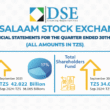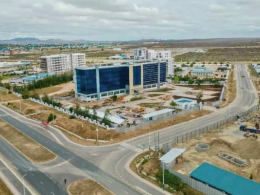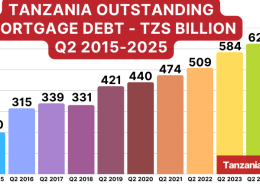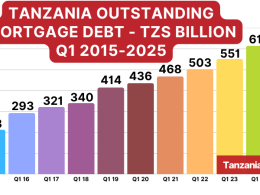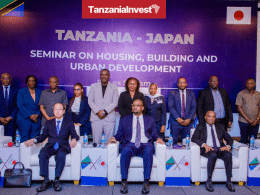The mortgage market in Tanzania registered a growth of 16% in 2016, according to the Tanzania Mortgage Refinance Company Limited (TMRC).
In its latest Tanzania Mortgage Market Update TMRC explains that although the growth was below last 2015 growth (45%), it is still above the overall GDP growth in Tanzania.
As at 31 December 2016, the total lending by banking sector for the purposes of residential housing was TZS 416.94 billion (USD 191 million).
This represents a growth of 3% from total mortgage lending of TZS 404 billion as at 30 September 2016.
Factors attributed to this increase are greater awareness on mortgage among borrowers and increased competition as new lenders enter the market.
As at end of Q4 2016, 28 banking institutions were offering mortgage loans, from 26 as at 31 December 2015.
The average loan size as at 31 December 2016 was TZS 118 million (USD 54,200), which represents an increase from average loan size of TZS 106 million (USD 48,490) reported as at 31 December 2015.
TMRC stresses that more positive developments are expected in the market with more banks now launching their mortgage loan products as competition in the traditional banking products continues to intensify.
A key element in the growth of the mortgage market in Tanzania continues to be the provision of long-term funding both in the forms of refinancing and pre-financing by the TMRC.
However, the high interest rates offered by mortgage lenders continue to pose an impediment to the growth of the mortgage market.
During the fourth quarter of 2016, interest rates offered by mortgage lenders were reported to range between 16-19%.
Compared to other countries in the East Africa region, Tanzania still has a relatively smaller mortgage market, although it is growing rapidly.
Outstanding mortgage debt as a proportion of Tanzanian GDP was around 0.45% as at the end of the fourth quarter of 2016.
This is lower than its East African neighboring countries but is growing at an accelerated pace.

